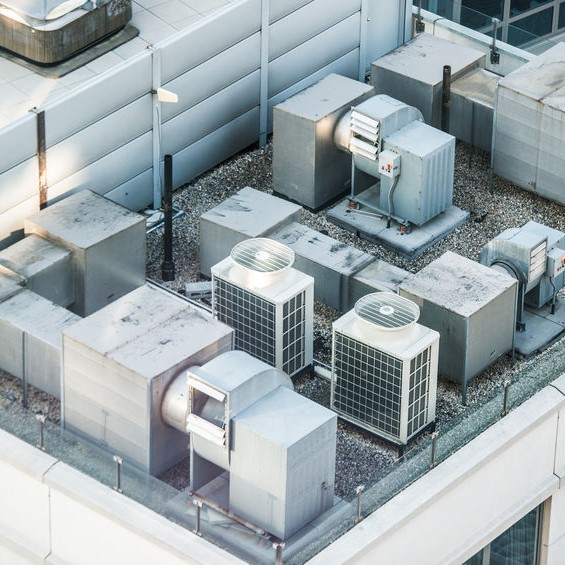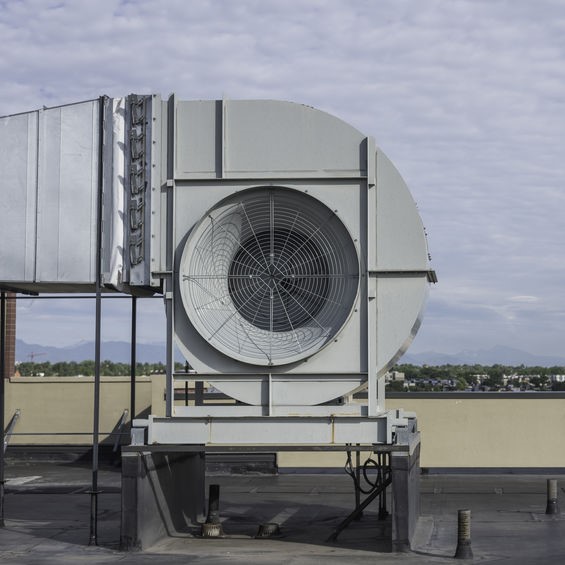
What is a commercial HVAC system?
Owners of commercial buildings have a lot of expenses, much like owning a home, but more expensive. The structure is larger, there is more electrical, more plumbing, the roof, and the commercial HVAC is larger too. So it is important that when anything on a commercial structure needs repairing or replacing, to get the best possible while staying within budget. This is especially so when it comes to the commercial HVAC.
The HVAC system in your home is powerful enough for your home but is a compact size. A commercial HVAC has to cool and heat a larger space, and therefore it is larger and takes more space than a residential HVAC unit. This is typically why they are the roof top of commercial structures with flat roofing system.
A commercial HVAC system is robust so that it can keep large areas comfortable like businesses, restaurants, schools, hospitals, etc. The parts within a commercial HVAC system are more robust as well, like these following key parts:
- Thermostat: The temperature of the structure is controlled by the thermostat that is connected to the HVAC system. The thermostat signals the HVAC system to produce cool or heat air based on the thermostat setting.
- Furnace: The biggest part of a commercial HVAC system is the furnace and keeps the interior of the building heated as set by the thermostat.
- Heat exchanger: Located inside the furnace is the heat exchanger and heats the air that the furnace pulls into the HVAC system. .
- Refrigerant lines: These are the lines that turn refrigerant substances inside the HVAC system into liquid form.
- Ductwork and vents: The commercial hvac ductwork and vents are much larger than the those of a residential HVAC system that transfers the cooled and heated air throughout the building.
What is the difference between commercial and residential HVAC?
While a commercial hvac and residential hvac system both serve cooling and heating to the structure, their mechanism and parts are similar yet different. The six biggest differences between residential and commercial HVAC systems are:
1.The Size
As we mentioned already, the size of a residential HVAC unit isn’t as large as a commercial HVAC system because of the space it needs to cool or heat. The components in a commercial HVAC system that differs the most are:
- Blower
- Compressor
- Condenser fan
- Damper
- Evaporator
2.The Placement
Your residential HVAC system has one part in the backyard or the side with another part inside the house, like a closet. A commercial HVAC system is installed on the rooftop of the building for several reasons:
- Space saving.
- Noise level.
- Maintenance and repairs.
3.The Intricacy
A commercial HVAC system is larger than a residential HVAC systems and it is required to be flexible to the various sizes of building, the occupancy level, and if the need for cooling and heating is periodic or constantly needed.
4.The Drainage
Every component of a commercial HVAC system is larger than a residential HVAC unit including the drainage. A residential HVAC unit drains into a pan while a Commercial HVAC system has several drainage pipes and pans.
5. The Equipment
The commercial HVAC equipment is customized to provide effective cooling and heating and cooling and is more intensive with different levels of humidity and temperature setting.
6. The Maintenance Cost
Commercial HVAC maintenance is more expensive because of the bigger size and robust parts than a residential HVAC system. A commercial HVAC is more complex with a different mechanism set and requires more training and experienced contractor.
What are the different types of commercial HVAC systems?
Any business should follow the unspoken rules of keeping the business comfortable for the employees and customers. This requires choosing a commercial HVAC system that fits the needs of the building size. Three options for choose from are:
- Single Split Systems: Popular among owners of enterprise-level businesses.
- Multi Split Systems: Operationally, there are several features in common, with the single split systems and functionally with the HVAC system.
- VRF Systems: Ideal to cool and heat medium to large spaces, available as a heat pump system or heat recovery system.

How do you size a commercial HVAC system?
An experienced commercial hvac installer will be the better person to advise you on this matter. However, so that you are informed, use the following steps: Take the square footage of the area you’re cooling and heating and multiply it by 25 then divide by 12,000 and subtract minus 0.5. This will give the required tonnage to cool and heat the space needed.
As a business owner, the purchase of a commercial HVAC system is an expense you don’t want to pay for again any time soon. So, how long do commercial HVAC systems last? The average is fifteen to twenty years with certain factors considered:
- The installation of the commercial HVAC system
- Routine commercial hvac maintenance and upkeep
- The climate and environment
Need help with your commercial HVAC system in Severn and Baltimore, MD? Call (410) 921-1277 with Rocky HVAC today.

